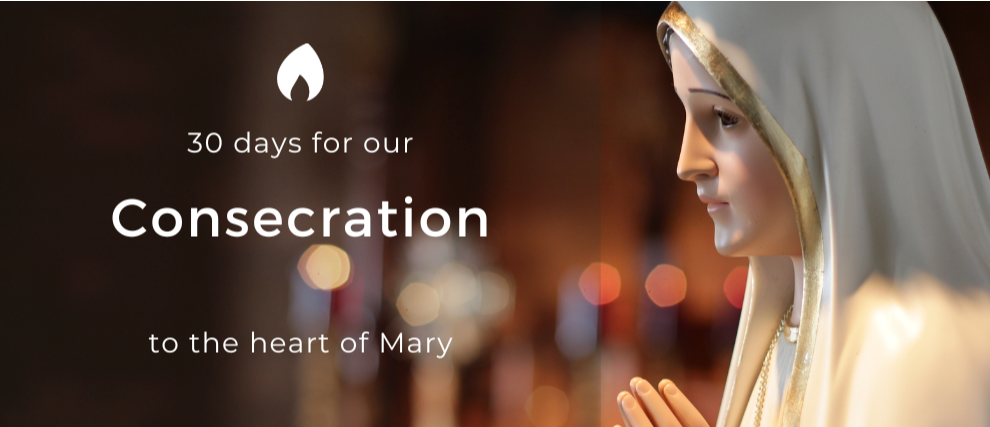Saint Clare of Assisi
Biography of Saint Clare of Assisi
Clare Offreduccio was born in Assisi in 1194, twelve years after Saint Francis of Assisi. Clare's mother, Ortolana, received this revelation from the Lord when she was pregnant: "Woman, do not fear: you will safely give birth to a light whose radiance will shine even more clearly than the light of the day itself” From this clarity, the little one received the name Clare. The Offreduccio family was well-off, Clare's father was a knight. Clare has a happy and pious childhood, caring a lot for the poor.
At the age of marriage, Clare refused all suitors, eager to keep herself for the Lord. It was then that she heard of Francis, already renowned in Assisi, she had a great desire to meet him. They saw each other for the first time in 1211 and immediately shared their common love for the Lord. Numerous exchanges followed, where Saint Francis taught the young Clare. Despite her parents' opposition, she decided to give herself totally to the love of Christ. In 1212, at the age of eighteen, she left her father's house, thus renouncing her inheritance to live in poverty. She went to the chapel of Sainte-Marie de la Portioncule to be consecrated to God. Her hair was cut, and she received the grey habit of penance. After two days, Francis brought Clare into the convent of Saint-Damien (San Damiano, south of Assisi). There, young women of all origins joined Clare and her sister Agnes. The order of the Poor Ladies, later called the Poor Clares, was born. The life of the sisters was organized, work with an important place because "idleness is the enemy of the soul", the sisters wove cloth for the churches. This first job is at the service of worship and the liturgy still carried out by the Poor Clares today. In 1215, Clare became Abbess of the convent.
In 1224 began the long illness of Clare, for 20 years she would remain more or less bedridden. She spent long hours in prayer, every day from noon to three o'clock, she meditated on the passion of Jesus, she had a very great devotion to the Blessed Sacrament. In 1226, Clare learned with great sorrow of the death of her holy father, Francis. In 1228, the Pope granted Clare and her sisters the privilege of poverty for which she had fought so hard. In September 1240, the famous invasion of the Saracens took place, who were miraculously stopped by Clare's prayer. In 1247, Clare began drafting her own rule, with a special emphasis on poverty. After 1250, her illness worsened and in 1253, Clare received the long-awaited visit of Pope Innocent IV, who approved the rule. A few days later, on August 11, 1253, Clare died.
On August 15, 1255, Clare was canonized by Alexander IV in Anagni. Almost simultaneously, work began on the construction of the Basilica of St. Clare in Assisi. Saint Clare is celebrated on August 11, the day of her entry into Heaven. She is the patron of television, telecommunications, embroidery, laundry, laundry and ironing machines. Thanks to her name, she was also the patron of the blind.
(Discover the life and work of many other saints on Hozana.)
Writings and works and quotations of Saint Clare of Assisi
The writings of Saint Clare
Saint Clare is one of the few women of the Middle Ages whose writings have reached us. In the 1234s, she wrote letters to Princess Agnes of Prague, testifying to her love for Christ and encouraging her to dedicate her life to Him. She says to her: "Attach yourselves to our most sweet Mother, who bore a son such as Heaven could not contain him, and whom she herself, however, took up in the little enclosure of her sacred belly and bore in her womb as a maiden." These letters reveal Clare's spiritual progress. In addition to these letters, Saint Clare's writings consist of her will, her blessings and the rule of life of the Poor Clares, she is the first woman to have written a monastic rule that she calls "a form of life of the Order of the Poor Sisters." It defines the direction of the life of these contemplative sisters: "to observe the holy gospel of our Lord Jesus Christ."
The work of Saint Clare
The great work of Saint Clare of Assisi is the foundation of the order of the Poor Clares. Following on from Saint Francis, Clare wished her sisters and daughters poverty as their main virtue. She never ceased to insist on this principal quality of Christ and the Virgin Mary. She said to her daughters: "For the love of the most holy and beloved Child, wrapped in poor little swaddling clothes, lying in a manger, and of her Most Holy Mother, I warn, implore and exhort my sisters to always dress in vile clothes". The Poor Clares are the most numerous contemplative religious family, they have lived eight centuries. There are today 18,000 Poor Clares in the world.
Spirituality of Saint Clare of Assisi
The testimonies of the sisters who shared the life of Saint Clare at the convent of Saint-Damien were reported during the process of canonization. The sisters reveal the spirituality of their mother and founder, Saint Clare. They agree that Clare communicated extensively, educated, educated, trained and encouraged during her lifetime: “When Saint Clare's mother spoke, everything she said was used to build up and teach others.” What inspires Clare's spirituality are the beatitudes enunciated by Jesus in the Gospel. It is about living them radically, especially the first beatitude, poverty, from which all others flow. To enter into this happiness, Clare gives her secret: "to look at Jesus, to contemplate him at length, poor, crucified with the desire to be configured to him".
Miracles of Saint Clare
Miraculous Healings
Several testimonies recount the healings that took place through the prayer of Saint Clare. Through the sign of the cross and her solid faith, she healed several sisters: Sister Bienvenue who had a great wound under her arm, Sister Christiane who was deaf, a beloved sister who suffered from several issues.
Multiplications
The testimonies tell of extraordinary events that occurred thanks to the faith of Saint Clare. One day, when there was only a small piece of bread left to feed all the nuns of the convent, Sister Clare ordered that this last piece be cut into fifty slices and that they be distributed to the sisters. Incredibly, Sister Cécile went to execute the order and as she cut, the bread did not diminish. She made all the slices necessary to feed the convent.
The invasion of the Saracens
In 1240, on the orders of the German Emperor Frederik, hordes of soldiers looted, burned, raped and killed in cities that remained faithful to the pope. The assailants were already in the cloister of Saint-Damien when Clare, then in the infirmary, took the box containing the Blessed Sacrament and says "Lord, guard your maidens yourself, since I am unable! ». A sweet child's voice answered: "I will always keep you," after which Clare added: "Lord, I beseech thee also defend this city," the same childish voice then said: “She will have a lot to suffer, but she will be protected.” One of the nuns of the convent recounts the miracle that followed: "and the Saracens fled with such haste that they did no harm or damage."
Prayers to Saint Clare
Devotion to Saint Clare became widespread because of the many miracles that took place through her intercession.

